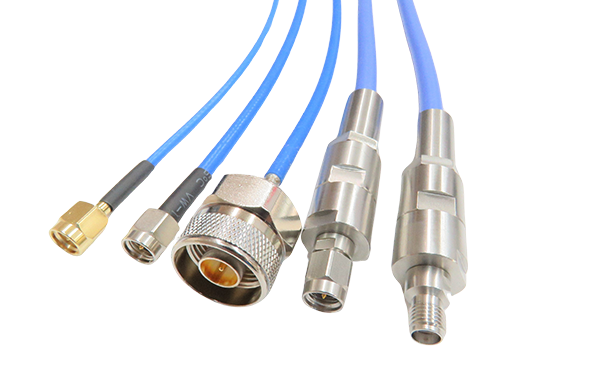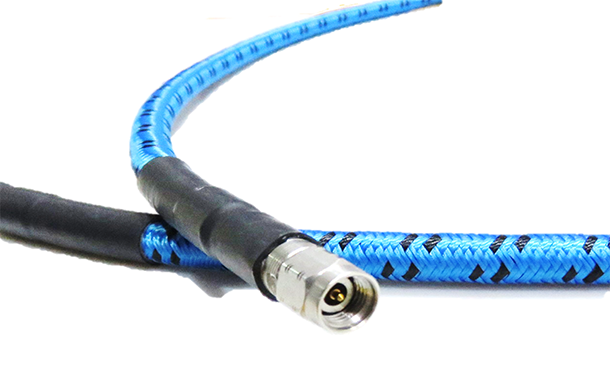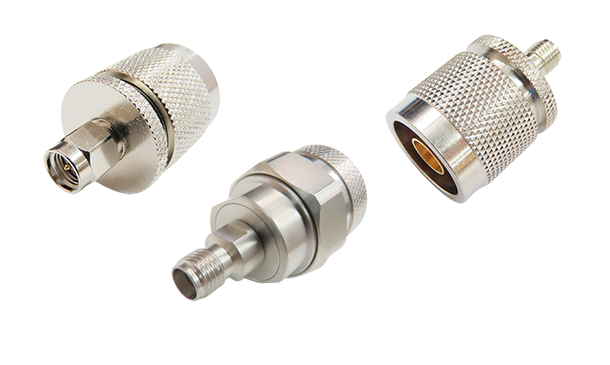- HOME
- Applications
- Blog
- Why 5G Microwave Networks are Revolutionizing Wireless Communication?
Why 5G Microwave Networks are Revolutionizing Wireless Communication?
25-10-03
5G has emerged delivering faster speeds, lower latency, and greater capacity to meet connectivity demands with the rapid evolution of wireless communication technology. Traditional network transmission methods have become inadequate, making 5G microwave a critical technology to support these high standard services.
Leveraging high frequency microwave bands for data transmission, 5G microwave enables rapid transfer of massive data volumes. It is particularly suited for urban areas, small cells, and backhaul network deployments, overcoming the limitations of challenging fiber optic infrastructure.
This article will delve into the development background, core technologies, application scenarios, and future outlook of 5G microwave. Helping readers gain a comprehensive understanding of its importance and potential within the 5G ecosystem.
〈Extended Reading:How Do Cable Assemblies Improve Signal Performance in High-Frequency Applications〉
〈Extended Reading:What are 1.85mm Connectors Key Components for High Frequency Applications〉
What is 5G Microwave?
Before delving into 5G microwave, we should understand the basic definitions of "Microwave" and "5G" firstly.
What is Microwave?
Microwave refers to radio waves operating within the frequency range of approximately 300MHz to 300GHz. It is commonly used for wireless transmission, radar, satellite communications, television broadcasting, and data transfer between base stations. Its key features include enabling high-speed, long-distance point-to-point communication.
〈Extended Reading:Microwave Components Explained: Why These Little Things Matter BIG Time?〉
What is 5G?
5G is the latest generation of mobile network standards, featuring three key characteristics.
-
High Speed (e.g. video streaming, cloud gaming)
-
Low latency (Support autonomous vehicles, remote surgery.)
-
Massive Connectivity (Support IoT devices and smart city applications.)
〈Extended Reading:Bulkhead SMA Connector Buying Guide: Specs, Materials & Applications〉
What is 5G Microwave and How Does It Work?
5G Microwave refers to the use of microwave frequency bands to carry 5G network data transmission. It is typically employed for wireless Backhaul or Fronthaul between base stations, serving as a replacement or supplement to fiber optics to achieve flexible and rapid deployment of 5G infrastructure.
In Taiwan, where high urban density and complex terrain make fiber optic deployment challenging in remote or mountainous areas, 5G microwave emerges as an ideal alternative. It not only supports high speed data transmission for mobile networks but also serves enterprise private networks, smart factories, and other applications, enhancing overall communication efficiency and flexibility.
〈Extended Reading:Microwave Coaxial Cables Design and Assembly for High-Frequency Communication〉
How does 5G Microwave Address the Three Major Pain Points of Existing Networks?
During 5G network construction, traditional networks face numerous challenges, including difficult fiber optic deployment, excessive network latency, and insufficient bandwidth capacity. The introduction of 5G microwave provides solutions to these issues. Here is how it addresses the three major pain points.
Difficulty for Fiber Optic Deployment
Many remote areas, mountainous regions, and older communities present high difficulty and high costs for fiber optic deployment in Taiwan. 5G microwave can replace portions of fiber optic infrastructure with wireless connections, rapidly linking base stations and significantly reducing construction time and costs.
Network Latency Issues
5G microwave supports low-latency transmission, particularly in short-range, high-bandwidth scenarios. For instance, it enables stable, real-time data transfer between small cells in urban areas, meeting the "low latency" requirement central to 5G.
〈Extended Reading:Microwave Technology Principles and Applications〉
Bandwidth Bottlenecks and Capacity Shortfalls
Compared to traditional microwave technologies used earlier, 5G microwave supports wider bandwidths with transmission rates exceeding several Gbps. This effectively alleviates network congestion caused by massive data surges, ensuring stable internet access for users even during peak traffic periods.
Through these advantages, 5G microwave not only enhances overall network flexibility and resilience but also enables faster. More cost-effective deployment of 5G base stations, making it a crucial enabling technology for advancing 5G adoption in Taiwan.
Applications of 5G Microwave across Industries
As 5G technology becomes increasingly widespread, 5G microwave is playing a more critical role across numerous industries. It serves not only as a transmission tool between base stations but also as a vital instrument driving industrial digital transformation. Below are several representative application scenarios in Taiwan.
Smart Manufacturing/Smart Factories
In industrial zones or factory buildings, deploying fiber optics can sometimes be inconvenient or constrained by existing infrastructure. Enterprises can rapidly establish high-speed wireless connections using 5G Microwave to link machinery, sensors, and monitoring systems, enabling the industrial Internet of Things and real-time remote monitoring.
Smart Cities/Public Infrastructure
Taiwan is advancing applications like smart streetlights, real-time traffic monitoring, and smart parking systems. These systems are often distributed across wide outdoor areas. Utilizing 5G microwave to connect various sensing points reduces construction and cabling costs, accelerates deployment speed, and ensures real-time data transmission as well as integration.
〈Extended Reading:The Ultimate Guide to RF Attenuators: Definition, Functions, and Applications〉
Healthcare Industry (Telemedicine)
Medical resources are relatively scarce in remote or island regions. The 5G microwave transmission system enables stable delivery of high-definition images and patient data, supporting applications like remote diagnosis and medical consultations to bridge healthcare resource gaps.
〈Extended Reading:How to Choose the Right RF Adapter? Specifications, Applications, and Selection Guide〉
Transportation and Smart Monitoring
Transportation systems such as high-speed rail, metro, and buses require real-time transmission of video and control signals, particularly when traversing mountainous terrain or bridge sections where fiber optic cable deployment is challenging. In such scenarios, 5G microwave offers flexible wireless backhaul solutions that enhance transportation safety and operational efficiency.
Temporary Large-Scale Events or Disaster Response
During concerts, sporting events, or post-disaster relief operations, rapid deployment of high-speed networks is often required. 5G microwave enables swift setup to support live video streaming and real-time command coordination, making it an ideal solution for mobile communications and emergency response.
What is the Critical Role of RF Microwave Connectors in 5G Microwave Systems?
Within 5G microwave systems, RF microwave components play an indispensable role in ensuring high-speed, high-bandwidth, and stable wireless transmission. Below are the functions and importance of several key components.
〈Extended Reading:RF Coaxial Connector: A Key Component for Optimizing Microwave Communications〉
Power Amplifier (PA)
Amplifies the microwave signal at the transmitter end, providing sufficient power for long-distance transmission. This is the core component ensuring signal strength.
Low Noise Amplifier (LNA)
Enhances weak signals and reduces noise at the receiver end, improving signal quality. This is crucial for ensuring clarity at the receiving end.
〈Extended Reading:2.92mm Connectors -The High Frequency Applications for Microwave Field〉
Filter
Used to filter out unwanted frequency band noise, preventing interference with other communication devices and improving spectrum efficiency.
Antenna Module
Responsible for transmitting and receiving microwave signals, serving as the gateway for the entire systems' external communication.
〈Extended Reading:RF Cables Major Characteristics, Applications and Key Points for Selection〉
Passive Components such as Couplers, Splitters, and Waveguides
Assist in signal routing, power distribution, and impedance matching to ensure smooth internal signal flow.
However, stable operation among these components relies on a critical component, the RF microwave connector whose importance cannot be overlooked.
-
Ensures Complete Signal Transmission: Connectors must exhibit low insertion loss and low reflection characteristics, otherwise signal attenuation or distortion will occur.
-
Maintain Impedance Matching: Effectively reduce reflections and interference to preserve overall system efficiency.
-
Supporting High Frequency Applications: 5G microwave often utilizes millimeter wave (mmWave) bands (e.g. 1.85mm or 1.0mm connectors operating up to 67 to110GHz), demanding ultra-high frequency response and stability.
-
Enhance System Modularity and Maintenance Efficiency: Superior connection design simplifies maintenance, replacement, and upgrade processes, accelerating deployment speed.
-
Durability and Environmental Resistance: Connectors with shock, dust, and water resistance better withstand outdoor base station and harsh environmental challenges.
Moreover, RF microwave connectors serve as critical link components for the entire 5G microwave system despite their small size. Their performance directly impacts signal stability and network quality, making them indispensable within the overall architecture.
Furthermore, the increasingly dense deployment of 5G base stations and small cells imposes stricter demands on connector size and installation convenience due to limited space. Thus, well-designed RF microwave connectors not only impact signal transmission quality but also serve as critical factors for overall system reliability and maintenance efficiency.
〈Extended Reading:What is RF Microwave? Mastering Technology Applications and Key Components for More Stable Wireless Communication!〉
Looking to Upgrade your 5G Microwave Performance? Choosing the Right RF Microwave Components is Crucial!
When building high-performance 5G microwave systems, many focus on base stations, antennas, and transmission architectures while overlooking a critical component: RF microwave connectors. In reality, these seemingly small connectors directly impact the overall system's signal integrity and stability. Especially in the high frequency millimeter wave bands used by 5G. Higher connector quality means lower signal loss, allowing the full transmission performance to be realized.
Selecting the right RF connector is the first step toward enhancing 5G microwave performance. In this regard, Huang Liang Technologies brings over 30 years of specialized R&D expertise in RF components in Taiwan. We dedicate to deliver high-precision, high-stability RF microwave connection solutions. We have earned the trust of domestic and international clients.
〈Extended Reading:Microwave Communication: The Core Technology of Modern Technology and the Key Role of RF Connectors〉
Key features for the products of Huang Liang Technologies are as below
-
Broadband Support Capability: From DC to 110 GHz, meeting diverse application needs for 5G, millimeter wave (mmWave), satellite communications, and more.
-
Low Insertion Loss and High Stability: Utilizing advanced materials and precision manufacturing processes to ensure exceptional RF performance in each connector.
-
Modular and Customizable Design: Offers various sizes, connector types, and structural configurations tailored to customer requirements, flexibly addressing diverse application scenarios.
-
MIT (Made in Taiwan) Quality Assurance: Entirely designed and manufactured in Taiwan, meeting international quality certification standards while balancing innovation and reliability.
Whether deploying small cells in urban areas, establishing microwave backhaul networks in remote regions, or implementing enterprise private networks and dedicated high frequency applications. Selecting the right RF microwave connector effectively enhances 5G microwave performance and system longevity. Choosing Huang Liang Technologies means choosing stability, efficiency, and professionalism.
〈Extended Reading:What is 5G Millimeter Wave? Key Differences and Features Over Regular 5G〉
Conclusion
Facing rapidly growing 5G application demands, 5G microwave technology has become a key driver in advancing communication networks. Within the overall system, seemingly unremarkable RF microwave connectors are actually critical factors affecting performance stability and signal quality. Only by selecting high-quality, precision-engineered connection components can the full performance potential of 5G microwave communication be realized.
With years of expertise in RF microwave technology, Huang Liang Technologies offers a comprehensive product line and customization capabilities. As one of Taiwan's few specialized providers of high-frequency, high-precision connectivity solutions, we serve system developers, equipment manufacturers, and businesses with demanding RF requirements. Please contact us for detailed product specifications and application recommendations. We deliver expert technical support and tailored service solutions.
〈Extended Reading:Explore Microwave Frequency and Their Applications in RF Microwave Connectors〉
〈Extended Reading:Explore BMA Connectors and Applications in Microwave Technology〉




